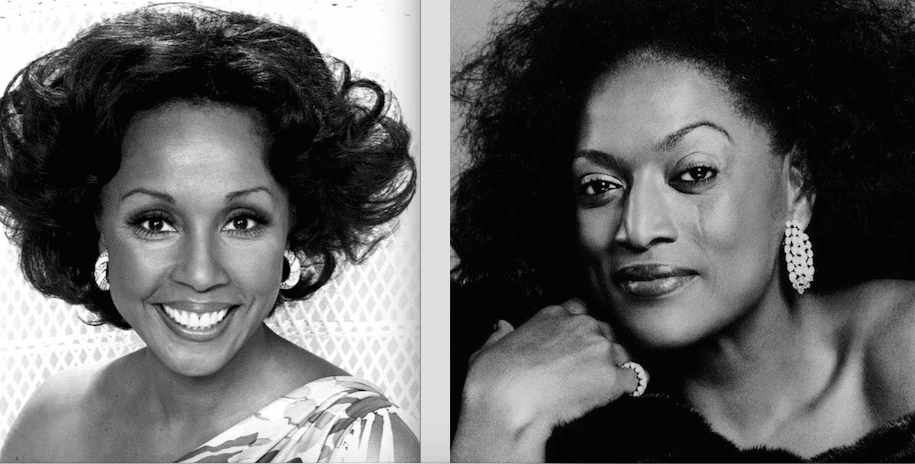Carroll and Norman, Losses to the World at Large
By • October 7, 2019 0 1058

Diahann Carroll — smart and beautiful and classy — died Oct. 4 after a battle with cancer. In her time and life, she tackled, touched and engaged varied popular show-business and cultural arenas and changed them, through her considerable vocal and dramatic talent, but also by her one-of-a-kind presence. She was 84.
Jessye Norman, 74, overpowering in talent, transcendent in voice and personality, described by the New York Times as “a regal American soprano,” died Sept. 30 of septic shock after complications from a spinal injury suffered in 2015.
Carroll and Norman were both gifted African American women and star performers, different in style and genres perhaps, but wholly original in the effect and affect of their gifts. You could say that they worked different sides of the same streets as performers: Carroll as actress and singer on television, in nightclubs, on Broadway and in films; Norman with her persona and remarkable voice on the most prestigious venues in the world — opera houses, the Kennedy Center, Paris itself.
Both of them, each in her own way, were “Unforgettable.” They were different in style and looks and life, but they shared certain qualities that made their passing an occasion of true loss for the world at large, not only for the environment of their particular lives and work.
Music and musicals and Las Vegas and movies were already on Carroll’s resume, which ran all the way back to television performances in the black-and-white world of the 1950s, where you can find her on crooner Eddie Fisher’s 1954 show, singing a song from Harold Arlen’s “House of Flowers.” She was almost impossibly beautiful, always animated, the singing was comfortable with jazz, pop, Broadway, with heartfelt, elongated ballads and show tunes. Personified onstage, it had bop and heart and soul, and was meant to endure. Often, Carroll, who was a serious person, but had old-style glamour and allure, reduced you to just “Wow!”
Screens tend to put a barrier of sorts between audience and performer, but that didn’t stop Carroll. She had her most enduring impact on the screen, big and little: “Julia,” “Claudine” and, yes, you’re hearing it right, “Dynasty.” She did some things that were pioneering. In “Julia,” in 1968, she became the first African American actress to star in a non-stereotypical role in her own prime-time network series. Carroll said that “we were going to present a very upper middle-class black woman raising her child, and her major concentration is not going to be about suffering in the ghetto.” The show made it to number seven in the ratings, lasted three years and got Carroll an Emmy nomination and an Emmy.
On the big screen, although she had memorable roles in “Porgy and Bess” and the really jazzy jazz movie “Paris Blues,” opposite Sidney Poitier and Paul Newman and Joanne Woodward, she took another challenge in “Claudine,” in which she played a Harlem woman who raises six kids on her own and falls in love with a garbage man played by James Earl Jones.
As for the prime-time soap “Dynasty,” well, she played a rich witch among rich witches as Dominique Deveraux. “I want to be the first black bitch on television,” she said. She was much more than that, a major force and celebrity, everywhere she went. She was a diva.
So was Jessye Norman, one of the grandest sopranos of American and world opera ever, the difference being that the diva aspect of Norman presented itself in her voice, her singing, her comportment, the drama in her life onstage.
One reason we always pray to the gods and goddesses of YouTube is that we visit aspects of glory, especially in the persona of someone like Norman, whose singing was almost otherworldly at times. YouTube with its little screens resurrects her as mighty, because the voice tingles your every cell, no matter what the material or occasion.
Catch her singing “Amazing Grace” on the occasion of Poitier’s receiving a Kennedy Center Honor — somehow you’re watching something definitive and final in her rendition, or something brand new.
One critic likened the voice to “a mansion of sound.” That mansion contained most of the great composers, but especially Strauss and even more especially Wagner. She was not a pioneer in the sense that there were no other black opera singers before her, including Marian Anderson (with her historic concert in Washington) and the gifted Leontyne Price; she recognized that she was walking and singing in their footsteps.
Thing of it was, she was creating her own footsteps, without backing off from the pain of race and even its aura. In a New York Times interview, she said: “It’s one thing to have a set of laws and quite another to change the hearts and minds of men. That takes a long time. I do not consider my blackness a problem. I think it looks rather nice.”
Operas recitals and spirituals encompassed her musical world, among just about any kind of music you can think of, including sometimes jazz. Beyond the voice itself, she was a true presence, and much honored, including recognition with a Kennedy Center Honor.
Nothing quite gets to her otherworldly and, at the same time, natural, down-to-earth, but regal quality as when she sang the “Marseillaise” on Bastille Day in Paris at the Place de la Concorde, wrapped in a tricolor. The video is a smidge indistinct, and all the more powerful for it. Like her German, her Italian or anything else she sang in, it was perfect.
For that, from all of us who never heard the gift of her voice and those who did: Merci, danke schön, thank you ever so much.

